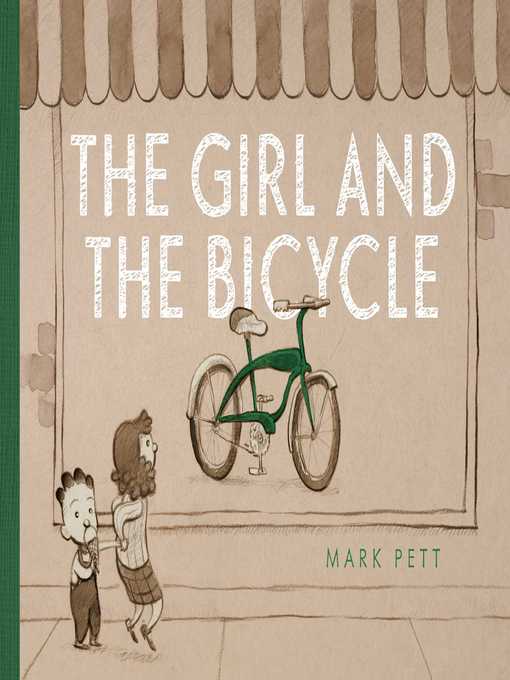
The Girl and the Bicycle
کتاب های مرتبط
- اطلاعات
- نقد و بررسی
- دیدگاه کاربران
نقد و بررسی

February 17, 2014
As in The Boy and the Airplane, Pett’s sepia-tinted drawings draw little attention to themselves in this companion book, quietly supporting his wordless story in a way that allows it to unfold smoothly. The girl of the title, often seen with her younger brother in tow, spots a bicycle in the window of a toy store and resolves to buy it. In a moment typical of Pett’s understated comedy, she thinks hard about how to earn enough money while her brother sits on the floor with the family cat on his head. The girl knocks on doors and finds an older woman living alone; together, they do yard work through the winter and into the spring. When at last she goes to buy the bicycle, it’s gone. In a moment that would be saccharine if not made credible by the story’s Jimmy Stewart–esque underpinnings, she uses the money to buy her brother a tricycle (Her hard work doesn’t go unacknowledged, though.) It’s not easy to celebrate simple virtues in an age of irony, but Pett succeeds. All ages. Agent: Kerry Sparks, Levine Greenberg Literary Agency.

February 15, 2014
A girl spies a gleaming bike in a shop window and decides to earn enough money doing yardwork to buy it. This wordless, retro book (the girl's molded curls, turtleneck, plaid skirt and Mary Janes definitely come from another era) champions both grit and kindness, but it seems mighty bleak at times. Moody cement-gray papers, nearly colorless illustrations and a cast of cold adults make the girl's determination and her working relationship with one kind neighbor all the more moving. Much of Pett's engrossing narrative is relayed through characters' limbs, eyes and brows, as many times they simply don't have mouths. The blank effect of a face without a smile, smirk or frown carries unexpected weight, delivering a sense that the character struggles to withhold or manage emotions. And talk about emotions! After working for the same spectacled lady for months earning money raking, planting and cleaning, the girl rushes to the store only to find her bike already sold. Many young readers may reel just imagining such staggering disappointment and be further boggled by her angelic decision to purchase a tricycle for her small brother instead. Never fear, a Capra-esque ending awaits. Like an old black-and-white movie, this companion to The Boy and the Airplane (2013) will remain charming and relevant--the old story about what you get when you give never really gets old. (Picture book. 4-6)
COPYRIGHT(2014) Kirkus Reviews, ALL RIGHTS RESERVED.

April 1, 2014
K-Gr 3-On a walk with her brother, a girl spies a beautiful bicycle in a store window. Determined to buy it, she counts her pocket money, hunts for loose change, and sets up a lemonade stall. When it's still not enough, she does odd jobs for an older neighbor until, over the course of many months, she save up the needed sum. Rushing to the store, she discovers the bicycle has been sold. Thankfully, two acts of kindness-from her neighbor and from the girl to her brother-give this charming wordless picture book a happy ending. The book has a retro appearance, with its sepia tint and line drawn cartoon characters. Women on the street wear hats and fur coats, and the men wear hats, suits, and ties. The only color in the illustrations is the green bicycle. This simple story has a lot to recommend it and offers much to discuss. Saving pocket money, doing extra chores to earn cash, and delaying gratification are all worthy themes. Discussing the girl's possible emotions, which are not always clear from her facial expressions (she's sometimes drawn without a mouth) and predicting what she will do next are also ways an adult can elicit discussion and build children's comprehension and speaking skills. A good addition for public and school libraries where staff actively promote choices that are not always obvious.-Michelle Anderson, Tauranga City Libraries, New Zealand
Copyright 2014 School Library Journal, LLC Used with permission.

























دیدگاه کاربران